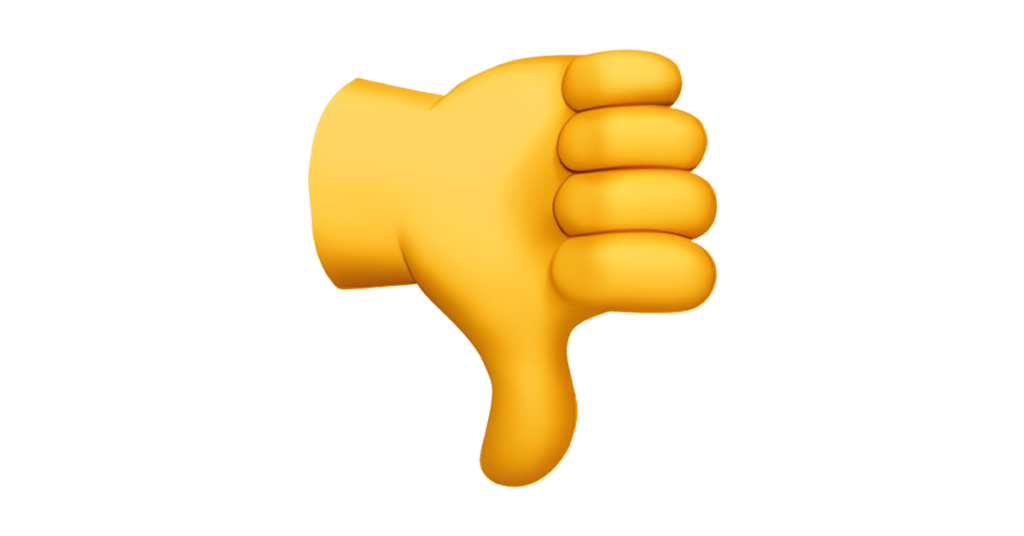Have you ever sent a thumbs down emoji without a second thought? While it may seem like a harmless way to express disapproval, this simple gesture can carry more weight than you realize. In today’s digital communication landscape, emojis have become a powerful tool for conveying emotions and reactions. However, the thumbs down emoji, in particular, has the potential to send unintended messages and even damage relationships. Before you tap that downward-pointing thumb in your next conversation, it’s worth considering the implications and exploring alternative ways to express your thoughts. Let’s delve into why you may want to think twice before deploying this seemingly innocuous symbol.
The Origins and Meanings of the Thumbs Down Emoji
Ancient Roman Roots
The thumbs down emoji has its roots in ancient Roman gladiatorial contests. Contrary to popular belief, a thumbs down gesture didn’t necessarily mean death for a defeated gladiator. Historical evidence suggests it may have signaled mercy. Over time, the interpretation evolved to represent disapproval or rejection.
Modern Digital Usage
In the digital age, the thumbs down emoji serves as a counterpart to the ubiquitous thumbs up emoji. While the thumbs up emoji typically conveys approval or agreement, the thumbs down symbol expresses dissatisfaction or disagreement. It’s commonly used in online forums, social media, and messaging apps to quickly communicate a negative sentiment without words.
Cultural Considerations
It’s important to note that the meaning of hand gestures, including the thumbs down, can vary across cultures. In some regions, this gesture is considered highly offensive. When using the thumbs down emoji in cross-cultural communication, you should exercise caution to avoid unintended offense or misunderstandings.
When is it Appropriate to Use the Thumbs Down Emoji?
The thumbs down emoji, often seen as the counterpart to the more popular thumbs up emoji, can be a tricky symbol to navigate in digital communication. While it’s tempting to use this emoji to express disapproval or disagreement, it’s important to consider the context and potential impact of your message.
Appropriate Usage
In certain situations, using the thumbs down emoji can be acceptable:
- Responding to close friends or family in a playful manner
- Voting or polling scenarios where negative feedback is expected
- Reacting to content on social media platforms that encourage varied responses
Proceed with Caution
However, in professional or formal settings, it’s generally best to avoid the thumbs down emoji. Instead, consider using more constructive language to express your thoughts. Remember, tone can be easily misinterpreted in text-based communication, and a thumbs down emoji may come across as harsh or dismissive.
When in doubt, opt for the thumbs up emoji or a neutral alternative to maintain a positive and respectful dialogue. By being mindful of your emoji choices, you can ensure your digital communications remain effective and appropriate across various contexts.
Better Alternatives: Thumbs Up Emoji or Words
The Power of Positivity
When communicating digitally, consider using the thumbs up emoji instead of its negative counterpart. This simple switch can drastically change the tone of your message. The thumbs up emoji conveys approval, agreement, or encouragement, making it a versatile and friendly option for various situations. It’s particularly useful in professional settings where maintaining a positive atmosphere is crucial.
Words: The Ultimate Communication Tool
While emojis are convenient, sometimes words are the best choice. Instead of relying on the thumbs-down emoji, which can come across as dismissive or harsh, try expressing your thoughts more precisely with language. This approach allows you to provide constructive feedback, explain your perspective, or suggest alternatives in a more nuanced and respectful manner. Remember, clear communication often requires more than just a symbol – it demands thoughtful expression through words.
Conclusion
As you navigate the world of digital communication, it’s crucial to consider the impact of every emoji you send. The thumbs down may seem like a harmless way to express disagreement, but its potential to cause offense or miscommunication should give you pause. Before using this polarizing symbol, reflect on your relationship with the recipient and the context of your conversation. Consider alternative ways to convey your message that may be clearer and less likely to be misinterpreted. By being mindful of how your emoji choices affect others, you can foster more positive and productive online interactions. Ultimately, effective communication is about more than just what you say—it’s about how you say it.
